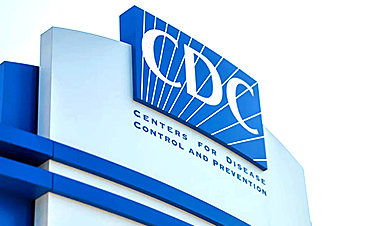Researchers at the LOEWE Centre for Translational Biodiversity Genomics (TBG) have discovered a significant diversity of enzymes in spider venom, previously overshadowed by the focus on neurotoxins.
These enzymes, found across 140 different families, could revolutionize industries by offering sustainable solutions in waste management and detergent manufacturing due to their biochemical properties. This discovery expands the potential uses of spider venom beyond traditional medical and agricultural applications, promising new research and economic opportunities.
Exploring the Complexity of Spider Venoms
With approximately 52,000 species of spiders globally, these arachnids are incredibly diverse and produce some of the most complex venoms in the animal kingdom. A single species’ venom can contain more than 3,000 distinct molecules, most of which are neurotoxins designed to subdue insect prey.
However, a research team from the LOEWE Centre TBG and the Fraunhofer Institute for Molecular Biology and Applied Ecology’s Bioresources branch (IME-BR) in Giessen, Germany, has uncovered a surprising discovery: spider venom is not just about neurotoxins. It also contains a wide variety of enzymes. The findings, published in npj Biodiversity from the Nature group of journals, highlight the untapped potential of these enzymes and their role in venom complexity.
Enzymatic Diversity in Spider Venom
“In the past, a few pioneering studies suggested the presence of enzymes in spider venoms, but a targeted search for them has never been carried out. We took on this task and systematically screened the raw data of all so far venom-wise analyzed spiders for enzymes. We were able to show that there are in fact more than 140 different enzyme families in their venom,” explains study leader Dr. Tim Lüddecke, head of the Animal Venomics working group at the IME-BR and the Justus Liebig University in Giessen.
“This means, among others, that we have dramatically underestimated the chemical diversity of spider venoms so far, as all calculations of complexity are based on the neurotoxins alone.”
Potential Applications of Spider Venom Enzymes
According to the authors, the results of the work not only enable new research approaches to better understand the evolution and function of spider venoms, but also open new perspectives for their use.
“Enzymes are key building blocks of the bioeconomy. They accelerate chemical reactions and are characterized by very low by-product formation, low energy consumption, and biodegradability. They can therefore be used to create value in a highly sustainable way. Industry is therefore constantly looking for new sources of enzymes,” explains Josephine Dresler, PhD student in the working group and first author of the study.
“Some of the enzymes we have identified could be used in detergents or waste management, for example, because of their fat-splitting or protein-degrading properties. They could make a significant contribution to a sustainable transformation there,” says Dresler.
Unlocking New Research and Industry Opportunities
The work of the Giessen scientists highlights the translational potential hidden in animal venoms, especially those of spiders.
“So far, the spider venom community has focused exclusively on medical or agricultural applications. Our discovery opens up the possibility of establishing a completely new field of applied research,” explains Lüddecke. “But we are only at the beginning, as less than one percent of all spider species have been studied for their venoms. I am confident that we will make more exciting discoveries in the remaining 99 percent of the world’s spider fauna!”
Reference: “Enlightening the toxinological dark matter of spider venom enzymes” by Josephine Dresler, Volker Herzig, Andreas Vilcinskas and Tim Lüddecke, 13 September 2024, npj Biodiversity.
DOI: 10.1038/s44185-024-00058-2
News
The Secret “Radar” Bacteria Use To Outsmart Their Enemies
A chemical radar allows bacteria to sense and eliminate predators. Investigating how microorganisms communicate deepens our understanding of the complex ecological interactions that shape our environment is an area of key focus for the [...]
Psychologists explore ethical issues associated with human-AI relationships
It's becoming increasingly commonplace for people to develop intimate, long-term relationships with artificial intelligence (AI) technologies. At their extreme, people have "married" their AI companions in non-legally binding ceremonies, and at least two people [...]
When You Lose Weight, Where Does It Actually Go?
Most health professionals lack a clear understanding of how body fat is lost, often subscribing to misconceptions like fat converting to energy or muscle. The truth is, fat is actually broken down into carbon [...]
How Everyday Plastics Quietly Turn Into DNA-Damaging Nanoparticles
The same unique structure that makes plastic so versatile also makes it susceptible to breaking down into harmful micro- and nanoscale particles. The world is saturated with trillions of microscopic and nanoscopic plastic particles, some smaller [...]
AI Outperforms Physicians in Real-World Urgent Care Decisions, Study Finds
The study, conducted at the virtual urgent care clinic Cedars-Sinai Connect in LA, compared recommendations given in about 500 visits of adult patients with relatively common symptoms – respiratory, urinary, eye, vaginal and dental. [...]
Challenging the Big Bang: A Multi-Singularity Origin for the Universe
In a study published in the journal Classical and Quantum Gravity, Dr. Richard Lieu, a physics professor at The University of Alabama in Huntsville (UAH), which is a part of The University of Alabama System, suggests that [...]
New drug restores vision by regenerating retinal nerves
Vision is one of the most crucial human senses, yet over 300 million people worldwide are at risk of vision loss due to various retinal diseases. While recent advancements in retinal disease treatments have [...]
Shingles vaccine cuts dementia risk by 20%, new study shows
A shingles shot may do more than prevent rash — it could help shield the aging brain from dementia, according to a landmark study using real-world data from the UK. A routine vaccine could [...]
AI Predicts Sudden Cardiac Arrest Days Before It Strikes
AI can now predict deadly heart arrhythmias up to two weeks in advance, potentially transforming cardiac care. Artificial intelligence could play a key role in preventing many cases of sudden cardiac death, according to [...]
NanoApps Medical is a Top 20 Feedspot Nanotech Blog
There is an ocean of Nanotechnology news published every day. Feedspot saves us a lot of time and we recommend it. We have been using it since 2018. Feedspot is a freemium online RSS [...]
This Startup Says It Can Clean Your Blood of Microplastics
This is a non-exhaustive list of places microplastics have been found: Mount Everest, the Mariana Trench, Antarctic snow, clouds, plankton, turtles, whales, cattle, birds, tap water, beer, salt, human placentas, semen, breast milk, feces, testicles, [...]
New Blood Test Detects Alzheimer’s and Tracks Its Progression With 92% Accuracy
The new test could help identify which patients are most likely to benefit from new Alzheimer’s drugs. A newly developed blood test for Alzheimer’s disease not only helps confirm the presence of the condition but also [...]
The CDC buried a measles forecast that stressed the need for vaccinations
This story was originally published on ProPublica, a nonprofit newsroom that investigates abuses of power. Sign up to receive our biggest stories as soon as they’re published. ProPublica — Leaders at the Centers for Disease Control and Prevention [...]
Light-Driven Plasmonic Microrobots for Nanoparticle Manipulation
A recent study published in Nature Communications presents a new microrobotic platform designed to improve the precision and versatility of nanoparticle manipulation using light. Led by Jin Qin and colleagues, the research addresses limitations in traditional [...]
Cancer’s “Master Switch” Blocked for Good in Landmark Study
Researchers discovered peptides that permanently block a key cancer protein once thought untreatable, using a new screening method to test their effectiveness inside cells. For the first time, scientists have identified promising drug candidates [...]
AI self-cloning claims: A new frontier or a looming threat?
Chinese scientists claim that some AI models can replicate themselves and protect against shutdown. Has artificial intelligence crossed the so-called red line? Chinese researchers have published two reports on arXiv claiming that some artificial [...]





















